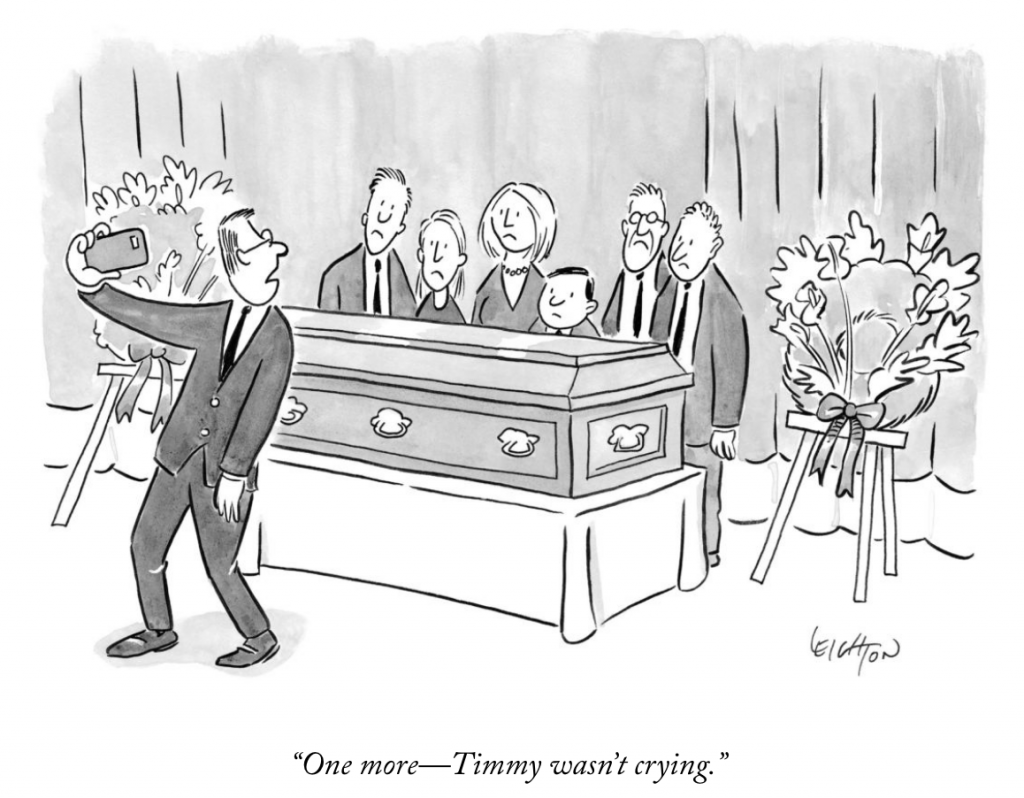
One of the clear refrains I’m hearing post-election has to do with the cost of virtual communication. We are only starting to come to terms with the degree to which our current climate of divisiveness has been amplified by the limitations of the Internet. Physical remove makes it (much) easier to dehumanize another person and (much) harder to empathize with them. Or, as we put it in the tech issue of The Mockingbird:
At its best, the disembodiment [of the web] engenders safety, the permission to engage with someone or something you otherwise find threatening, e.g., a Gospel that seems too good to be true. At its worst, though, the distance tends to exacerbate vindictiveness. Divorced from body language, non-verbal cues, and eye contact, we are much more likely to objectify or demonize those with whom we disagree. Thus, the Internet has not ushered in a new age of mutual understanding on hot button issues. It has deepened the divides. We have given new meaning to that towering couplet in T.S. Eliot’s “Ash Wednesday”:
No place of grace for those who avoid the face
No time to rejoice for those who walk among noise and deny the voice
Kind of Captain Obvious territory, I know, and something Louis CK explicated much better than we ever could in one of his most viral clips:
I thought of Louie–and the cost of disembodiment–whilst reading Susanna Schrobsdorff’s harrowing cover article in Time Magazine a couple weeks ago (which we’ve referenced elsewhere) on “Teenage Depression and Anxiety”. In addition to the surprising repudiation of helicopter parenting (in the online sphere at least, which is marked by its glaring lack of supervision), one of the more alarming things she reports is the dramatic rise in “cutting” among today’s teens–and not just the girls. She writes:
Self-harm is certainly not universal among kids with depression and anxiety, but it does appear to be the signature symptom of this generation’s mental-health difficulties. All of the nearly two dozen teens I spoke with for this story knew someone who had engaged in self-harm or had done it themselves. It’s hard to quantify the behavior, but its impact is easier to monitor: a Seattle Children’s Hospital study that tracked hashtags people use on Instagram to talk about self-harm found a dramatic increase in their use in the past two years. Researchers got 1.7 million search results for “#selfharmmm” in 2014; by 2015 the number was more than 2.4 million.
…Researchers are developing a deeper understanding of how physical pain may relieve the psychological pain of some people who practice it. That knowledge may help experts better understand why it can be hard for some people to stop self-harming once they start. [Janis] Whitlock, the director of the self-injury research program at Cornell, explains that studies are pretty consistent in showing that people who injure themselves do it to cope with anxiety or depression.
It’s hard to know why self-harm has surfaced at this time, and it’s possible we’re just more aware of it now because we live in a world where we’re more aware of everything. Whitlock thinks there’s a cultural element to it. Starting in the late 1990s, the body became a kind of billboard for self-expression–that’s when tattoos and piercings went mainstream. “As that was starting to happen, the idea of etching your emotional pain into your body was not a big step from the body as a canvas as an idea,” she says.
The idea that self-harm is tied to how we see the human body tracks with what many teens told me when I interviewed them. As Faith-Ann describes it, “A lot of value is put on our physical beauty now. All of our friends are Photoshopping their own photos–it’s hard to escape that need to be perfect.” Before the dawn of social media, the disorders that seemed to be the quintessential reflection of those same societal pressures were anorexia or bulimia–which are still serious concerns.
Whitlock says there are two common experiences that people have with self-harm. There are those who feel disconnected or numb. “They don’t feel real, and there’s something about pain and blood that brings them into their body,” she says.
Woah. If the experts are to be believed, the cost of disembodiment (or “over-mediated communication”) is more than just political or global but intensely personal as well. It certainly lends more fuel to those calling for Silicon Valley to adopt something like a Hippocratic Oath.

Oddly enough, Schrobsdorff’s reporting may have activated whatever nascent ecclesiology may be lurking in yours truly’s Brunnerian bones. In trying to come up with something to say this past Sunday, for example, I couldn’t side-step the assigned lectionary passage, which was the portion of Luke in which Christ talks about the temple being torn down (Luke 21:5-19). “Not one stone will be left upon another” he says.
What no doubt sounded like an apocalyptic word to those who were leaning on the temple to mediate/arbitrate between themselves and God–which was a lot of people–may have come off differently to those who the temple system had left out by virtue of either their status or sins or birth (or all of the above).
Needless to say, it is a tough passage to preach on without mentioning that other temple-demolishing moment of Christ’s ministry, the curtain being torn in two at the moment of his death. Most commentators view its rending as the ultimate foreshadowing of the temple’s destruction in 70 AD, that Christ’s death somehow dismantles the divide between sinful humanity and a holy God, a divide broached in part when God took on flesh in the first place.
There’s therefore something poetic about the fact that the Church, in all its ludicrousness and hypocrisy, might remain one of the last places today where people who disagree regularly come together, not just in spirit but body. Where they not just see and talk to one another, but occasionally (if unintentionally!) smell each other’s breath, maybe bump into a neighbor as we amble toward the communion rail. Even if your church is not a beacon of diversity in other ways, how counter-cultural–subversive even–it is for a Republican to kneel next to a Democrat, a Libertarian next to a Green, a Greatest Generation Conservative next to a Disgruntled Millennial and so on.
Because to encounter another person’s physical presence is to encounter their weakness–the worried look on their face, the bandage on their hand, the strained way they relate to their sibling, etc–to be schooled in the compassion-inducing truth that “another person is every bit as real as you are” (J. Franzen). Which means that the power here is not that we’re all coming together in some marshmallow cloud of unity (though I guess that is pretty powerful in and of itself). It’s that we’re coming together in humility, acknowledging that none of us have all the answers, that our posture before God is–and ‘doth’ remain–one of need.
We are not there to give–our input, our contribution, our vote–but, face to face, to receive. Both the body and the blood.
Costly stuff to say the least.

COMMENTS
4 responses to “The Rising Tide of #selfharmmm”
Leave a Reply













DZ – This is a lovely piece (stuff) to say the least and these are healing, loving words to say the most…must be the Trinity at work here – Father, Son, and Holy Spirit!
“Thank you” will remain my words to Mockingbird.
Very costly…and yet for us to enter a church right now is above our trust level, way above, out of reach, because 80% of “evangelicals” voted for sexual assault against women, and I am a childhood survivor, hatred and bigotry, and I have been married to a Black man for 45 years, and we went through hell in the early 1970s in Virginia, and the KKK for the first time in history is holding a celebratory parade for the president elect, ironically close to where my husbands family sharecropped for many years, enduring the unimaginable.
I’ll pass. The church has shown its true colors and they run white, and reject people who don’t fit their mold. Just give me Jesus… I just had to go back to short term therapy as the election situation triggered past events so much that flashbacks returned. I’m hoping I only need a few sessions for them to stop.